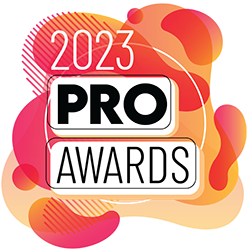Irish Distillers’ International Marketing Director on Promoting Jameson Whiskey to Global Audiences

We recently heard from Dickies’ Global CMO about the apparel brand’s collab with Jameson whiskey, which features a 10-piece capsule collection, a pop-up retail experience and co-branded creative touted by influencers across the pair’s digital platforms. This week, we’re presenting part two of our coverage, from the spirits side of the campaign.
“We talk about this idea of using collaborations to build fame for our brand in places you wouldn’t expect to see them,” said Brendan Buckley, International Marketing Director at Irish Distillers. “Showing up in the space of fashion is kind of new for us. It’s a way to bring a bit more cultural stretch to our respective brands.
Following are the highlights of our conversation with Buckley as he discusses what Jameson looks for in a partnership, the brand’s connection to the music scene and localizing the campaign for global audiences.
Chief Marketer: What does Jameson look for in a collaboration? And what are your goals with this?
Brendan Buckley, International Marketing Director at Irish Distillers: With any brand collaboration, both parties need to have some degree of a common goal. We’ve used this phrase for years to describe our principle and who we collaborate with: We search for “kindred spirits,” our brands, people, venues, with whom we have a shared outlook and shared values.
The other strategic marketing objective for us is this idea of using collaborations to build fame for our brands in places you wouldn’t expect to see them. Showing up in the space of fashion is kind of new for us. It’s a way to bring a bit more cultural stretch to our respective brands.

CM: How are you using influencers to get your message out?
BB: Influencer marketing has become one of the standard tools of modern day marketing. Our teams around this program will be active in 26 markets worldwide. So all of our market affiliates in those countries will be working with local influencers, tapping into the world of streetwear and fashion. It gives us another way to turn up in culture beyond the conventional way that we currently do.
But that said, Jameson has a long and storied past of being more than just a whiskey. We’ve got this strong reach into the world of music and movies that I’d love to say was brilliant marketing, but it wasn’t. It was just organic. It happened 20, 25 years ago. Lots of famous musicians adopted the Jameson brand because they just liked who we were, what we did, and the unpretentiousness of it.
We had this phrase that describes Jameson, which is: “We’re a serious whiskey that doesn’t take itself too seriously.” We’re incredibly serious about making extremely high quality whiskey, but we’re not so precious about it. We ended up getting adopted, and we were unknowingly doing influencer marketing before influencer marketing became a thing. Nowadays it’s a bit more coordinated.
CM: How are you launching across different localities?
BB: We give all our markets inspiration. We’ve got the two big tentpole pop-ups, one in New York and Carnegie Station in London. But others might do smaller scale pop-up experiences in their respective markets. Especially post-pandemic, people are much more interested in and happy to get into those experiences again. But by and large, most markets will follow a fairly common approach, which is working with influencers using digital/social media.
CM: When it comes to collaborating with another brand, what are some best practices?
BB: In practical terms, we’re looking for shared passion points. We’ve got a strong understanding of who the Jameson consumer is. But there are other cultural passion points, be it music, sports, cooking, fashion.
You need to be very careful to pick the right partner. At times there is a sense that collaborations jump the shark somewhat. Some brands seem to be doing quite unusual collaborations. We do a strong sense of, look, if the collaboration makes sense, well good, but let’s not go forcing it or chasing something if it doesn’t make sense. Because at the end of the day, we’ve got a strong belief in our brand. If there’s going to be a positive synergy from two brands doing something interesting together, great. But don’t be trying too hard.




























